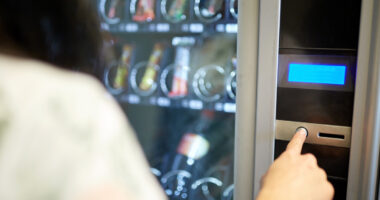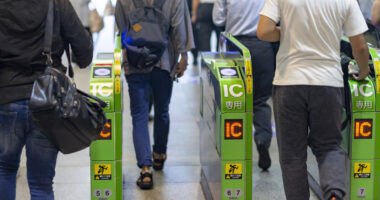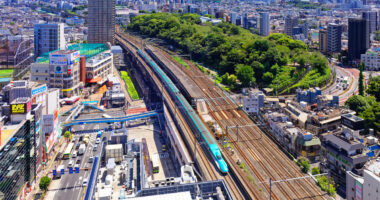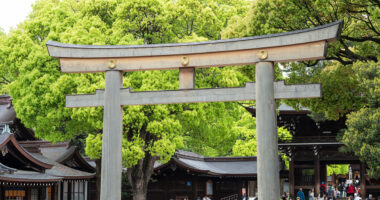- Types of toilets in Japan
- Are public toilets in Japan clean and safe?
- How to use public toilets in Japan: a guide for tourists
- Toilet etiquette in Japan: do’s and don’ts
- Toilet symbols in Japan and what they mean
- Common challenges and solutions
- Top locations for public toilets in Japan: Where to find them easily
- Fun facts about Japanese toilets
- Accessible toilets in Japan for travelers with special needs
- Do you need to pay for public toilets in Japan?
- Final tips for a smooth restroom experience in Japan
Japan is known for its advanced technology, rich cultural traditions, and exceptional cleanliness. Among the many surprises that await visitors, one of the most unexpected is the unique experience of using a toilet.
Japanese restrooms range from high-tech bidet toilets with multiple functions to traditional squat toilets that may feel unfamiliar to first-time users. Navigating these different types of toilets can be a new experience, but understanding how they work makes it much easier. This guide will provide useful information on the types of toilets in Japan you may not have seen before, how to use them correctly, and the important etiquette to keep in mind.
Types of toilets in Japan
High-tech bidet toilets (Washlets)
The high-tech bidet toilet, often called a “Washlet” (a trademark of TOTO), is one of the most well-known features of Japanese restrooms. These advanced toilets are commonly found in hotels, shopping centers, and even public restrooms, offering a level of comfort and hygiene that surprises many visitors. Equipped with multiple functions, they provide a more convenient and refreshing experience. Some of their key features include:
Bidet wash (oshiri and bidet)
One of the standout features of Japanese Washlets is the built-in bidet system, which offers separate cleaning settings for oshiri (rear) and bidet for the front. Users can often adjust both the water pressure and temperature, ensuring a comfortable and hygienic experience tailored to their preferences.
Heated seats
Sitting on a cold toilet seat can be unpleasant, especially during winter. Most Japanese high-tech toilets solve this problem with heated seats that provide warmth and comfort, making even the simplest bathroom visit more enjoyable.
Air-drying
Many Washlets come with an integrated air-drying function, which gently dries the user after washing. This reduces the need for toilet paper and enhances hygiene by minimizing contact.
Automatic flushing
In many public places and modern homes, Japanese toilets are designed to flush automatically as soon as the user stands up. This hands-free feature ensures a cleaner and more sanitary restroom experience.
Deodorizer
To maintain a fresh-smelling restroom environment, many Washlets include a built-in deodorizer that neutralizes odors after use. This feature keeps the bathroom pleasant, whether at home or in public facilities in Japan.
Sound masking feature (Otohime)
In Japan, restroom privacy is highly valued, and some toilets come with a sound-masking feature known as “Otohime” (translated as “Sound Princess”). This function plays a flushing sound or white noise to cover any natural sounds, providing users with a more discreet experience.
How to use a high-tech Japanese toilet
Using a Japanese toilet for the first time can feel a bit overwhelming, especially with all the buttons and features you may not be familiar with. Whether you’re in a hotel, shopping mall, or public restroom, this step-by-step guide will help you navigate the experience with ease.
Sitting correctly
Japanese high-tech toilets are designed for seated use. Ensure you are comfortably positioned on the seat before proceeding.
Activating the bidet function
To use the bidet feature, locate the control panel either next to the toilet seat or attached to a nearby wall. Press “oshiri” for a rear wash or “bidet” for a gentler feminine cleanse. You can also often adjust the water pressure and temperature to your comfort level. If unsure, start with a lower setting and increase gradually.

Photo for illustrative purposes
Squat toilets
Traditional Japanese squat toilets date back centuries and were once the standard before modern Western-style toilets became widespread. They can still be found in older buildings, rural areas, and some public restrooms. These toilets feature a porcelain basin embedded in the floor, requiring users to squat rather than sit. While they may seem unfamiliar to visitors, squat toilets are still preferred by some for hygiene reasons, as they minimize direct contact with surfaces. Sometimes, these toilets are indicated with a sign saying 和式トイレ washiki toire (Japanese-style toilet).
Here’s how to use a squat toilet in Japan:
Face the raised hood
When using a Japanese squat toilet, position yourself so that you are facing the raised hood or the sloped side of the toilet. Your back should be toward the restroom door.
Squat down
Place your feet on the designated foot areas on either side of the toilet. Lower yourself into a squat position while maintaining balance.
Use the toilet
Proceed as needed while ensuring stability. If necessary, hold onto a support rail (if available) for extra balance.
Flush the toilet
Locate the flush mechanism, which may be a lever, button, or foot pedal nearby. Some older squat toilets require you to turn a knob or pull a chain.
Dispose of toilet paper properly
In some areas, Japanese plumbing is not designed to handle toilet paper. If a waste bin is provided, dispose of used paper there instead of flushing it. Always check for signage indicating proper disposal.
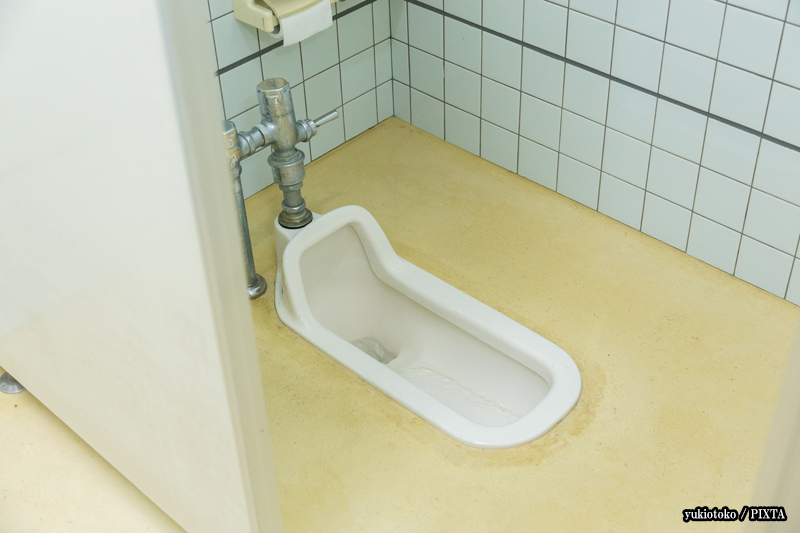
Photo for illustrative purposes
Public restroom toilets
Public restrooms in Japan offer a mix of modern and traditional toilet styles. In urban areas, many restrooms are equipped with high-tech Washlets, while older facilities, especially in rural locations, may still feature squat toilets. Some public toilets in remote areas lack basic amenities like toilet paper or hand soap. Travelers are advised to carry tissues and hand sanitizer for convenience.
Train station and convenience store toilets
Convenience stores across Japan typically provide free restrooms for customers, making them a reliable option when traveling. These restrooms are generally well-maintained, though availability may vary by location.
Train stations also offer restroom facilities, but their condition depends on the station’s size and location. Larger stations in major cities often have clean, modern toilets, while smaller stations may have more basic facilities.
Are public toilets in Japan clean and safe?
Yes! Japan has a well-earned reputation for maintaining clean and safe public restrooms. Many public restrooms in Japan are designed with user convenience in mind, featuring touchless technology, accessibility options, and even gender-neutral facilities in some areas. Some parks and tourist spots have aesthetically designed restrooms that blend into the surroundings, offering a more comfortable experience. Security is also a priority. Well-lit restrooms in stations, shopping centers, and major public areas ensure safety, and some even have emergency buttons for assistance.
While overall restroom standards are high, it’s always good to be prepared with your hygiene essentials!
How to use public toilets in Japan: a guide for tourists
Find an accessible restroom
Public toilets are available in train stations, department stores, parks, and convenience stores. Most are free to use.
Follow signage
Restroom signs often include English or universal pictograms, making them easy to locate. Some also indicate accessibility features.
Use facilities properly
Many toilets come with advanced features. It’s better to familiarize yourself with the control panel before use.
Maintain good hygiene
Certain restrooms provide disinfectant wipes or sprays for sanitizing the seat. If available, clean your seat before using.
Be considerate of others
Avoid taking too long in the stall and ensure the toilet is clean for the next user, using disinfectant if available and needed.
Toilet etiquette in Japan: do’s and don’ts
Use the slippers
In many traditional establishments, you’ll find special toilet slippers inside the restroom. These are meant to be worn only inside the restroom and should not be taken outside.
No talking on the phone
Japanese people value quiet and privacy in restrooms, so talking on the phone while inside is considered rude.
Flush after use
Leaving the toilet unflushed is considered highly impolite. If you are unsure how to flush, look for buttons labeled 流す nagasu (flush) or a lever on the side.
Avoid standing on the seat
Some tourists unfamiliar with bidet toilets mistakenly squat on the seat. This is not only unnecessary but can potentially cause damage, as Japanese bidet toilets are designed for sitting.
Toilet symbols in Japan and what they mean
Understanding toilet symbols in Japan can make restroom navigation easier for travelers. Many public restrooms use pictograms instead of English labels, which can sometimes be confusing. Here are the most common ones:
- 🚻 General restroom symbol: Universal sign for public toilets.
- 🚹 Male restroom 男性用 dansei toire : Often represented by a blue figure or the kanji 男.
- 🚺 Female restroom 女性用 josei toire: Typically shown as a red figure or the kanji 女.
- ♿ Accessible toilet 多目的トイレ tamokuteki toire: Signifies barrier-free restrooms for people with disabilities.
- 🚼 Baby changing area おむつ交換台 omutsu kōkandai: Indicates a changing table for infants.
- 🚰 Drinking water 飲料水 inryōsui: Sometimes found near restrooms, signifying a safe drinking fountain.
- 🚿 Shower room シャワールーム: Some public facilities, like highway rest stops, offer paid showers.

Photo for illustrative purposes
Common challenges and solutions
Buttons in Japanese
If you encounter a toilet panel with buttons in Japanese, here are some useful translations:
- 大 (dai) – Large flush
- 小 (shō) – Small flush
- 止 (tome) – Stop (stops bidet functions)
- おしり (oshiri) – Rear wash
- ビデ (bidet) – Front wash for women
- やわらか (yawaraka) – Gentle spray
- 乾燥 (kansō) – Drying function
Toilets without toilet paper
Although they are become increasingly scarce, as mentioned earlier, some toilets—especially in remote rural areas but occasionally even in major cities—do not provide toilet paper. Soap may also not be provided. Always carry a small pack of tissues as well as wipes / disinfectant to avoid unwanted inconvenience.
How to flush when there’s no visible button
Some modern toilets use motion sensors for flushing. If there’s no visible button or lever, waving your hand near the sensor may trigger the flush.
Top locations for public toilets in Japan: Where to find them easily
Locating a restroom in Japan is usually hassle-free, thanks to the country’s well-maintained public facilities. Instead of searching aimlessly, use Google Maps to find the nearest toilet by typing “public restroom” or checking major locations like train stations, department stores, and parks. If you’re in a tourist-heavy area, large hotels and shopping centers often provide free access. Always carry tissues and hand sanitizer, as some places may lack supplies.
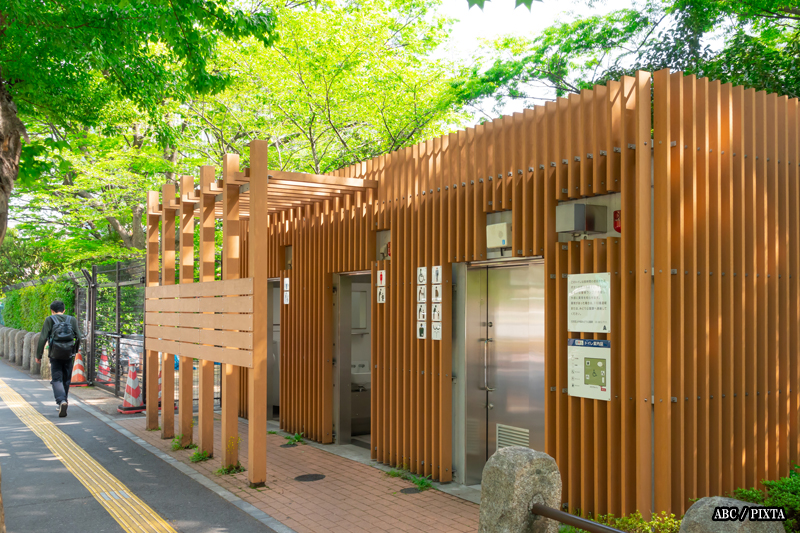
Photo for illustrative purposes
Fun facts about Japanese toilets
- Some Washlets have AI features: Newer models learn user preferences and adjust settings accordingly.
- Japan has talking toilets: Some advanced Washlets provide voice guidance and even play relaxing music.
- You can buy portable bidets: If you love the bidet experience, you can purchase a portable Washlet for travel.
- Toilets with a sink on top: Some restrooms have a sink above the toilet tank, allowing users to wash their hands with the water that fills the tank for the next flush.
Accessible toilets in Japan for travelers with special needs
Japan has made significant efforts to improve accessibility for travelers with disabilities, and one of the key aspects of this is providing barrier-free toilets. Accessible restrooms are available in major public areas, including airports, train stations, shopping malls, and tourist attractions. As mentioned above, these facilities are usually labeled as 多目的トイレ tamokuteki toire, also indicated by the universal wheelchair symbol.
Tokyo, Osaka, and other major cities have a good number of accessible restrooms available. For those exploring more rural areas, finding an accessible toilet can be a bit more challenging. It is advisable to check ahead, especially when visiting older temples, shrines, or countryside locations. Highway rest stops, known as michi-no-eki (literally, “road station”) often have barrier-free restrooms as well.
Japan’s commitment to accessibility ensures that travelers with special needs can find restrooms that cater to their requirements. However, planning ahead using locator apps or checking in advance at major attractions can make the experience even more convenient.
Do you need to pay for public toilets in Japan?
No, most public restrooms in Japan are free to use. Unlike some countries that charge for restroom access, Japan provides free and clean facilities in train stations, parks, malls, and tourist areas. However, some premium restrooms in high-end department stores, airports, and occasionally train or metro stations, may require a small fee for access to luxurious facilities with extra amenities.
Final tips for a smooth restroom experience in Japan
- Be prepared for both modern and traditional toilets.
- Don’t be afraid to press buttons on the seat, bidet or its operating panel.
- If confused, look for pictograms.
- Respect restroom etiquette.
- Enjoy the unique experience!
By understanding how to use toilets in Japan properly, travelers can enjoy a more comfortable and stress-free trip. Whether you encounter a high-tech Washlet or a traditional squat toilet, you’ll now be well-prepared to handle any restroom situation during your journey. Happy travels!

